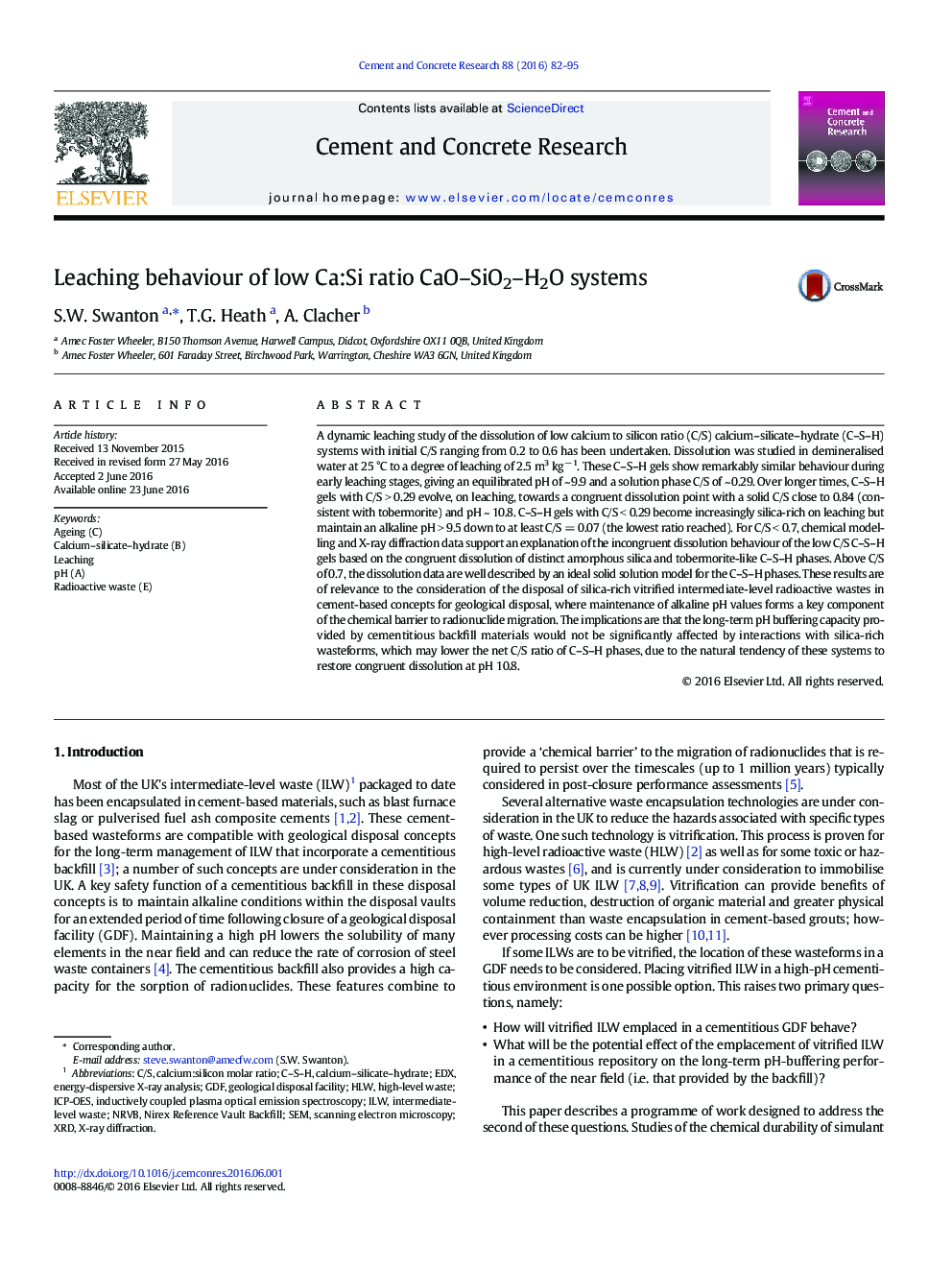| Article ID | Journal | Published Year | Pages | File Type |
|---|---|---|---|---|
| 1455943 | Cement and Concrete Research | 2016 | 14 Pages |
A dynamic leaching study of the dissolution of low calcium to silicon ratio (C/S) calcium–silicate–hydrate (C–S–H) systems with initial C/S ranging from 0.2 to 0.6 has been undertaken. Dissolution was studied in demineralised water at 25 °C to a degree of leaching of 2.5 m3 kg− 1. These C–S–H gels show remarkably similar behaviour during early leaching stages, giving an equilibrated pH of ~ 9.9 and a solution phase C/S of ~ 0.29. Over longer times, C–S–H gels with C/S > 0.29 evolve, on leaching, towards a congruent dissolution point with a solid C/S close to 0.84 (consistent with tobermorite) and pH ~ 10.8. C–S–H gels with C/S < 0.29 become increasingly silica-rich on leaching but maintain an alkaline pH > 9.5 down to at least C/S = 0.07 (the lowest ratio reached). For C/S < 0.7, chemical modelling and X-ray diffraction data support an explanation of the incongruent dissolution behaviour of the low C/S C–S–H gels based on the congruent dissolution of distinct amorphous silica and tobermorite-like C–S–H phases. Above C/S of 0.7, the dissolution data are well described by an ideal solid solution model for the C–S–H phases. These results are of relevance to the consideration of the disposal of silica-rich vitrified intermediate-level radioactive wastes in cement-based concepts for geological disposal, where maintenance of alkaline pH values forms a key component of the chemical barrier to radionuclide migration. The implications are that the long-term pH buffering capacity provided by cementitious backfill materials would not be significantly affected by interactions with silica-rich wasteforms, which may lower the net C/S ratio of C–S–H phases, due to the natural tendency of these systems to restore congruent dissolution at pH 10.8.
